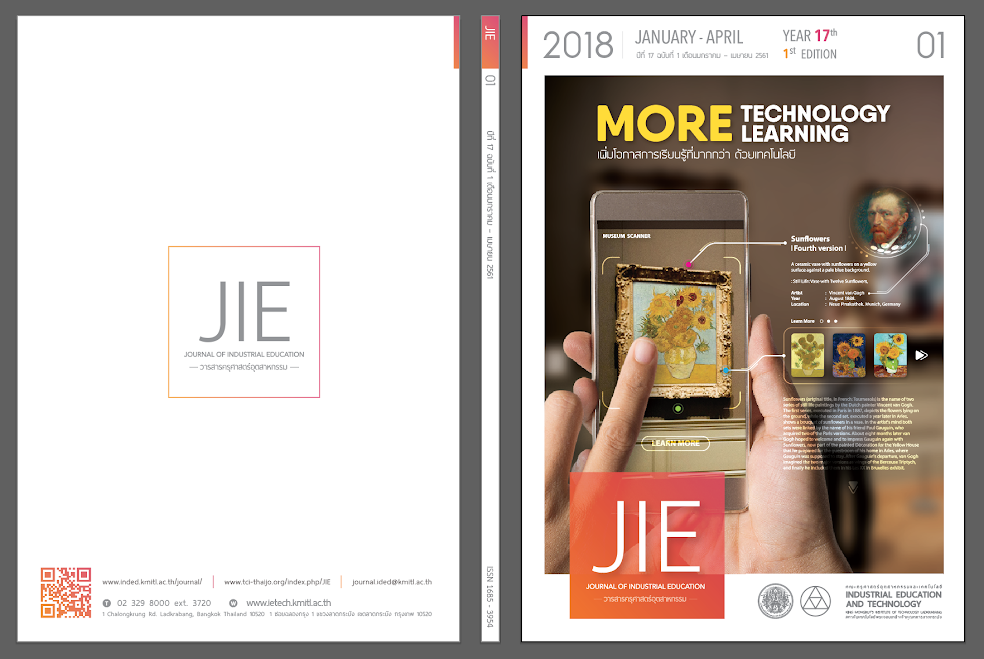INTELLIGENT STUDENT RELATIONSHIP MANAGEMENT MODEL
Keywords:
Intelligent student relationship management model, student relationship managementAbstract
This article presents an intelligent student relationship management model (i-SRM) that result from the synthesis of four customer relationship management models as IDIC Model, CRM Value Chain, The Gartner’s Competency Model: Eight Building Blocks of CRM and DEAR Model. The model has been adapted to the context of student relationship management, and integrate intelligent technologies such as data warehousing, conversational user interface (CUI), multi-agent system, machine learning and web services technology. The model can be applied to the context of each institution and student will gain experience from the intelligent student relationship management system as well as the satisfaction of teaching, learning, living in education and student loyalty. When graduated, the graduates still have the feeling of commitment and would like to participate in the development of institutions, resulting in a cycle of quality education development that affects the stability of the institution budget, quality of instruction and student retention rates that leads to sustainable development of the country.
References
[2] Maderer, J. 2016. Artificial Intelligence Course Creates AI Teaching Assistant. Retrieved November 5, 2017, from https://www.news.gatech.edu/2016/05/09/artificial-intelligence-course-creates-ai-teaching-assistant
[3] Paura, L. and Arhipova, I. 2014. Cause Analysis of Students’ Dropout Rate in Higher Education Study Program, In Procedia - Social and Behavioral Sciences, 109(January), p. 1282-1286.
[4] Gholami H., et al. 2015. A CRM Strategic Leadership Towards Sustainable Development in Student Relationship Management: SD in Higher Education, In Procedia Manufacturing, 2, p. 51-60.
[5] Lechtchinskaia, L., Friedrich, I. and Breitner, H. M. 2012. Requirements Analysis for a Student Relationship Management System – Results from an Empirical Study in Ivy League Universities. 45th Hawaii International Conference on System Sciences. p. 5132-5141.
[6] Peppers, D. and Rogers, M. 2004. Managing Customer Relationships: A Strategic Framework. Hoboken, New Jersey: John Wiley & Sons.
[7] Buttle, F. 2015. Customer Relationship Management: Concepts and Technologies. 3nd ed. Amsterdam: Elsevie.
[8] Gartner. 2017. Make CRM and Customer Experience a Technical Reality: A Gartner Trend Insight Report. Retrieved November 5, 2017, from https://www.gartner.com/doc/3803481
[9] Wittaya Danthamrongkul and Pipop Udorn. 2006. CRM-CEM Yin Yang Marketing. Bangkok: WongKlom.
[10] Suriya Pumchalerm and Prachyanun Nilsook. 2013. Advisor system based approach to customer relationship for private higher education institution in Thailand. Technical Education Journal King Mongkut’s University of Technology North Bangkok, 4(1), p. 115-121.
[11] Payne, A. 2005. Handbook of CRM: Achieving Excellence in Customer Management. s.l.:Elsevier, ISBN: 0750664371.
[12] Bejou, D. 2005. Treating students like customers. BizEd, 4(3), p. 44-47.
[13] Nair, C., Chan, S., and Fang, X. 2007. A Case Study of CRM Adoption in Higher Education, Proceedings of the 2007 Information Resources Management Association International Conference.
[14] Wilairat Khuncharoen, et al. 2016. The Development of Guardians’ Participation Model in Educational Activities of Secondary Demonstration School in Bangkok. Journal of Industrial Education, 15(3), p. 75-81.
[15] Russell, J. S., Norvig, P. 2010. Artificial intelligence: a modern approach. 3rd Edition, New Jersey: Prentice Hall, ISBN 0-13-604259-7.
[16] The CRISP-DM consortium. 2011. CRISP-DM methodology. Retrieved November 6, 2017, from https://www.the-modeling agency.com/crisp-dm.pdf
[17] Varit Kankaew and Panita Wannapiroon. 2015. System Analysis of Virtual Team in Cloud Computing to Enhance Teamwork Skills of Undergraduate Students. In Procedia - Social and Behavioral Sciences, 174, p. 4096-4102.
Downloads
Published
How to Cite
Issue
Section
License
"The opinions and contents including the words in papers are responsibility by the authors."
"ข้อคิดเห็น เนื้อหา รวมทั้งการใช้ภาษาในบทความถือเป็นความรับผิดชอบของผู้เขียน"



